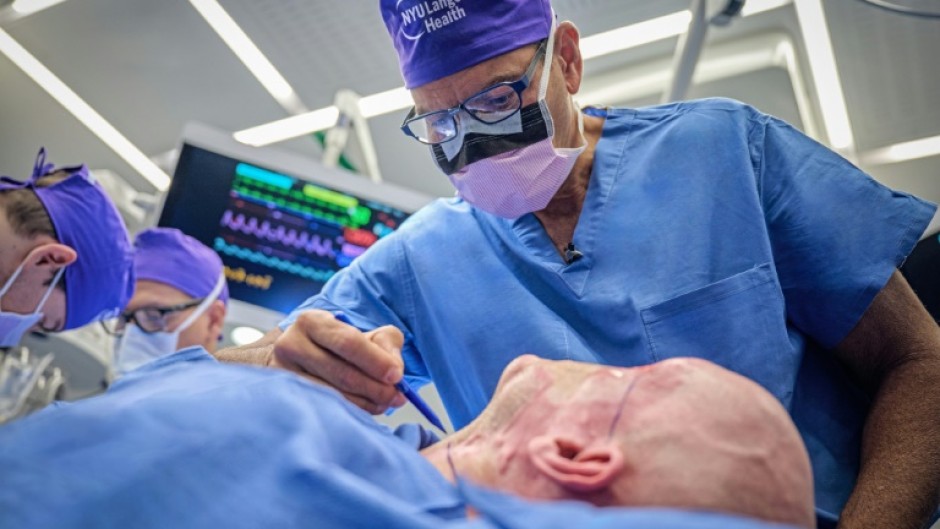NEW YORK - A team of surgeons in New York said on Thursday they had performed the world's first transplant of an entire eye in a procedure described as a medical breakthrough, although it isn't yet known whether the patient will actually regain his sight.
The groundbreaking surgery involved removing part of the face and the whole left eye of a donor and grafting them onto the recipient: a 46-year-old line worker who survived a 7,200-volt electric shock in June 2021 when his face touched a live wire.
Aaron James, 46, suffered extensive injuries including the loss of his left eye, his dominant left arm above the elbow, his entire nose and lips, front teeth, left cheek area and chin down to the bone.
He was referred to NYU Langone Health, a leading medical center for facial reconstruction, which carried out the procedure on May 27.
Transplanting an entire eye has long been a holy grail of medical science, and though researchers have had some success in mice -- where they have restored partial vision -- it's never before been performed in a living person.
"The mere fact that we've accomplished the first successful whole-eye transplant with a face is a tremendous feat many have long thought was not possible" said Eduardo Rodriguez, who led the 21-hour-surgery that made use of patient-specific 3D cutting guides. "We couldn't have asked for a more perfect patient," he added.
Although the transplanted left eye has shown signs of good health, including direct blood flow to the retina, which is responsible for receiving light and sending images to the brain, it's not certain James will regain his sight.
- 'Huge deal' -

Nevertheless, "this is a huge deal," Kia Washington, a professor of surgery at University of Colorado Anschutz Medical Campus, who has been working in the same field for 15 years, told AFP.
Daniel Pelaez of the University of Miami's Bascom Palmer Eye Institute, who has also been working towards the same goal, told AFP: "The transplantation of a human eye at NYU Langone represents a pivotal moment in our common quest to restore sight and offers hope to countless individuals around the world."
James, whose right eye remains intact, was considered an ideal candidate because his need for a facial transplant meant he would require immunosuppressive drugs regardless, making the risk-benefit calculation favorable -- even if it only conferring cosmetic value rather than sight.
"I'm grateful beyond words for the donor and his family, who have given me a second chance at life during their own time of great difficulty. I hope the family finds solace in knowing that part of the donor lives on with me," said James, who returned to his native Arkansas in September to be with his wife and daughter.
He still has to return to New York for monthly follow-up appointments, and has the option of returning to work as a safety manager for high-voltage line workers in future.
- Optic nerve regeneration -
Given the time that has passed since the surgery, Washington said she did not think it likely that James' eye would regain vision, but "I never say something is impossible," she added.
The NYU Langone team said they had used bone marrow-derived adult stem cells to promote nerve repair.
Achieving the goal of sight restoration could involve bringing other cutting-edge approaches to bear, said Washington -- including gene therapy to tap the optic nerve's intrinsic ability to heal; using a device called a nerve wrap to protect the tissue; or using devices that pick up signals and bypass the damaged pathway.
"We're making great progress in the treatments to promote optic nerve regeneration that could accompany eye transplant," Jeffrey Golberg, who is leading similar efforts at the Byers Eye Institute at Stanford University, told AFP.
"These adjunctive therapies will allow the donor eye to significantly connect to the brain and restore meaningful visual function to blind patients everywhere."
By Issam Ahmed


